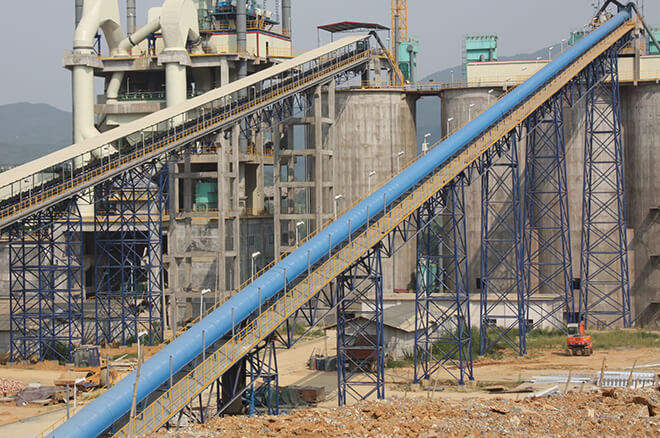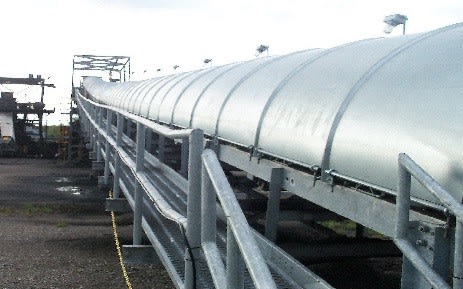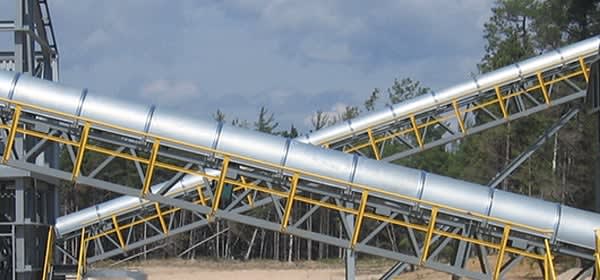bootlegend
Structural
- Mar 1, 2005
- 289
I'm looking for some opinions and approaches for methods of calculating wind loads on conveyor trusses and more specifically the arched belt "covers" that are sometimes attached to the truss. See the pictures for what I'm talking about.
Currently we are using ASCE 7-10 Figure 27.4-3 for arched roofs to calculate the external pressure coefficient. This chart is for enclosed and partially enclosed buildings and results in a substantial suction uplift on the hood. I'm questioning the applicability of this method and fishing for other approaches. The covers are open on the bottom and the spans are very short (maybe 6 feet max) compared to a building. It seems likely that the wind can pass through the truss meaning an open building pressure coefficient is more appropriate. I thought about approximating the arch as a pitched roof and using Figure 27.4-5 for pitched free roofs on open buildings. But noting the h/L ratio upper limit of 1.0 leads me to believe that these spans are just too short to develop much suction. My last rationalization is simply considering the entire truss and cover system as a whole and calling it a sign. I would not be calculating suction across the top of a sign so does it make sense to do so simply because the top is arched.
I appreciate any opinions.



Currently we are using ASCE 7-10 Figure 27.4-3 for arched roofs to calculate the external pressure coefficient. This chart is for enclosed and partially enclosed buildings and results in a substantial suction uplift on the hood. I'm questioning the applicability of this method and fishing for other approaches. The covers are open on the bottom and the spans are very short (maybe 6 feet max) compared to a building. It seems likely that the wind can pass through the truss meaning an open building pressure coefficient is more appropriate. I thought about approximating the arch as a pitched roof and using Figure 27.4-5 for pitched free roofs on open buildings. But noting the h/L ratio upper limit of 1.0 leads me to believe that these spans are just too short to develop much suction. My last rationalization is simply considering the entire truss and cover system as a whole and calling it a sign. I would not be calculating suction across the top of a sign so does it make sense to do so simply because the top is arched.
I appreciate any opinions.



